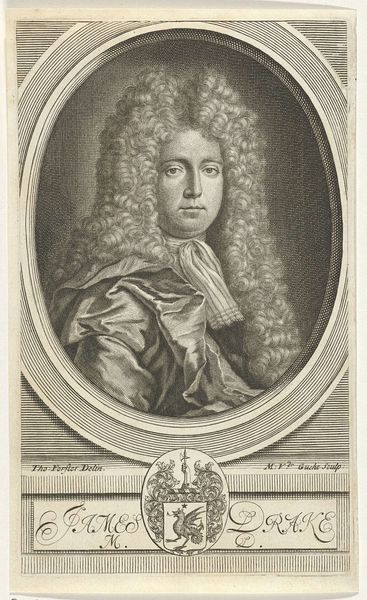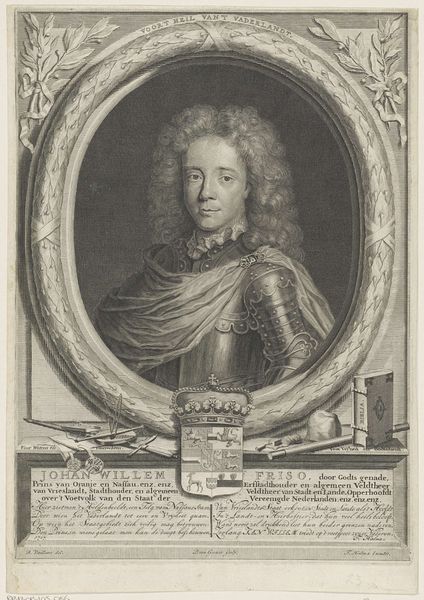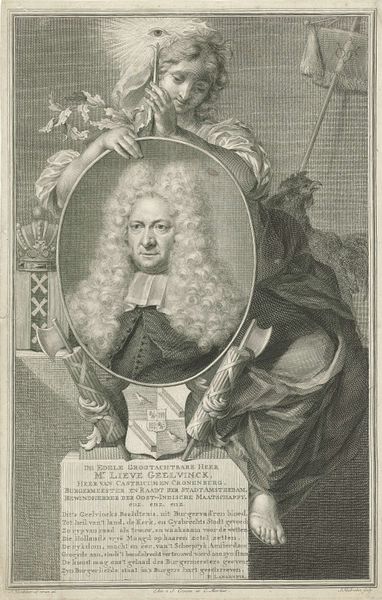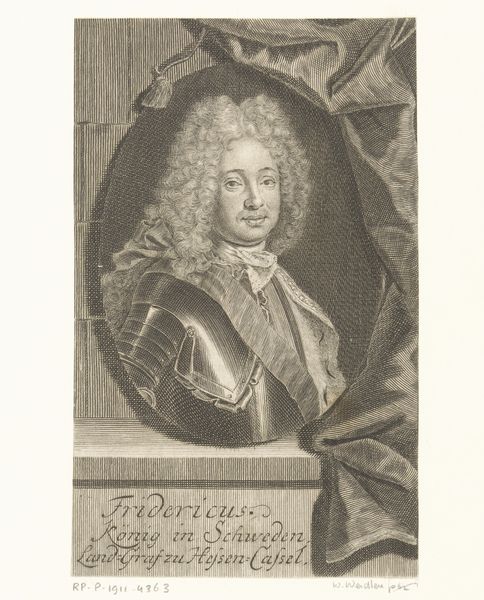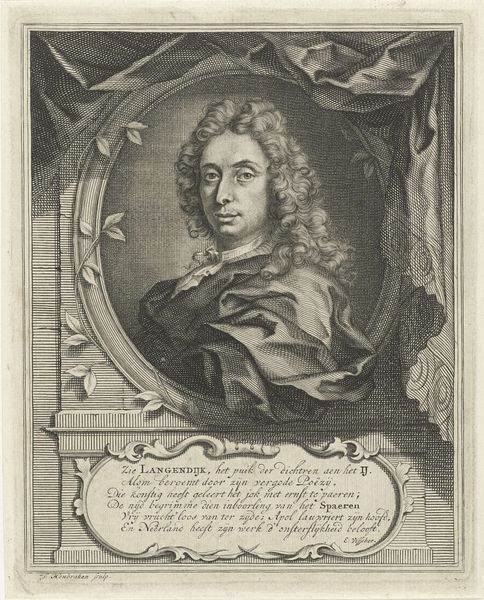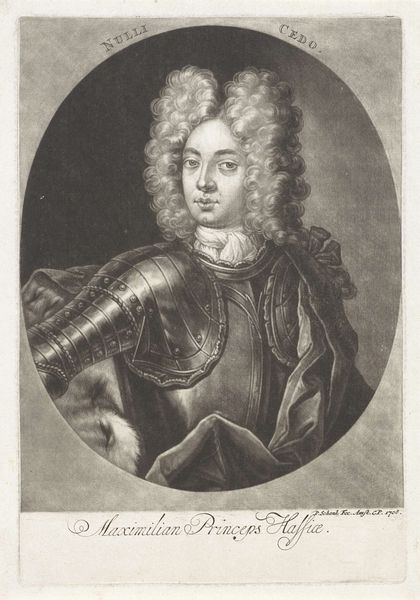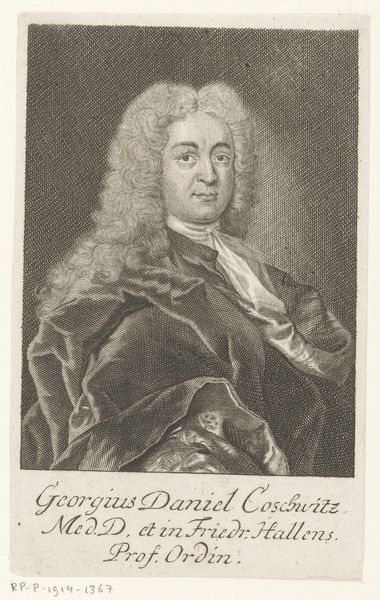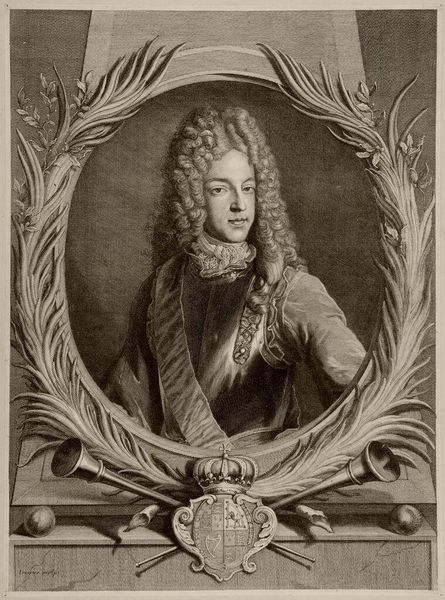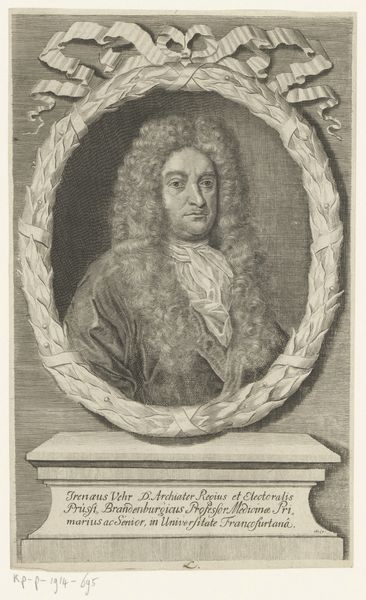
print, engraving
#
portrait
#
baroque
# print
#
portrait reference
#
portrait drawing
#
history-painting
#
engraving
Dimensions: height 269 mm, width 197 mm
Copyright: Rijks Museum: Open Domain
Editor: Here we have "Portret van Carlo Albani" by Arnold van Westerhout, dating from between 1680 and 1684. It’s an engraving, a print. I'm immediately struck by the elaborate wig and frame—it feels very staged. What can you tell me about the social context surrounding this portrait? Curator: This is an intriguing example of Baroque portraiture, clearly meant for public consumption. The elaborate staging you noted speaks volumes. How do you think images like these were used to solidify power structures in 17th century Europe? Editor: I guess this portrait would present Carlo Albani in a certain light. Given the inscription, referencing Clement XI, this image surely intended to emphasize the subject's noble lineage and associations with the papacy. Did the format itself - the engraving - influence the public’s perception of these figures? Curator: Absolutely. Engravings allowed for mass production and wider dissemination of these images. The choice to present Albani in this way reflects a strategic effort to cultivate and maintain a specific image of the family for political and social advantage. This wasn’t merely about recording someone's likeness; it was about actively constructing a carefully crafted persona within the political landscape. What does the use of the oval frame and drapery suggest? Editor: The oval and the drape definitely add to the feeling of importance. It almost feels theatrical, drawing even more attention. Curator: Precisely. Everything serves a purpose here. Such carefully orchestrated elements conveyed status and legitimacy at a time when images played a crucial role in defining identity and authority. The portrait is less a personal glimpse than a carefully considered piece of political communication. Editor: That makes me look at it very differently now. I'd initially only seen the surface-level elements, but recognizing its historical context really changes its meaning. Curator: Exactly. Understanding how the socio-political climate shaped both the creation and reception of such art allows us to decode these visual strategies and gain a far richer appreciation for their historical significance.
Comments
No comments
Be the first to comment and join the conversation on the ultimate creative platform.
